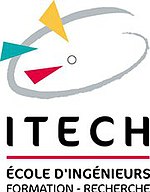| Titre : |
Thermodynamic analysis of thermal denaturation of hide and leather |
| Type de document : |
texte imprimÃĐ |
| Auteurs : |
Michael Komanowsky, Auteur |
| AnnÃĐe de publication : |
1992 |
| Article en page(s) : |
p. 52-66 |
| Note gÃĐnÃĐrale : |
Bibliogr. |
| Langues : |
AmÃĐricain (ame) |
| Index. dÃĐcimale : |
675 Technologie du cuir et de la fourrure |
| RÃĐsumÃĐ : |
Both real (based on mole of collagen) and effective (based on mole of independently melting cooperative regions) thermodynamic parameters of collagen denaturation and the number and size of independently melting cooperative regions can be calculated from data obtained using differential scanning calorimetry (DSC). DSC studies of hide collagen and chrome-tanned leather with varied water content were used to validate the following assumptions: (1) the length and number of independently melting cooperative regions are related to the distance between the number of hide-charge-density domains known to exist in collagen; (2) enhanced electrostatic interactions in these high-charge density domains stabilize the collagen triple helix leading to a decreased number of domains and higher melting temperatures. For hide collagen, the number of independently melting cooperative regions found was 52, in close agreement with the 57 bands observed by electron microscopy in positively stained native collagen fibrils. Chrome tanning reduced the number of regions found by DSC to 19. Air drying of hide had the same effect as tanning probably due to enhanced electrostatic interactions in the absence of water. Lyophilized hide, adjusted to 20% moisture content, had 15 and chrome-tanned leather at the same moisture content had 10 independently melting regions. Application to leather processing is dicussed. |
| En ligne : |
https://drive.google.com/file/d/1HXXnbSKf-oogxa6czgg6su2UNTZkKZVj/view?usp=drive [...] |
| Format de la ressource ÃĐlectronique : |
Pdf |
| Permalink : |
https://e-campus.itech.fr/pmb/opac_css/index.php?lvl=notice_display&id=8329 |
in JOURNAL OF THE AMERICAN LEATHER CHEMISTS ASSOCIATION (JALCA) > LXXXVII, N° 2 (02/1992) . - p. 52-66
 Accueil
Accueil


 Accueil
Accueil


 Aller sur edunet
Aller sur edunet